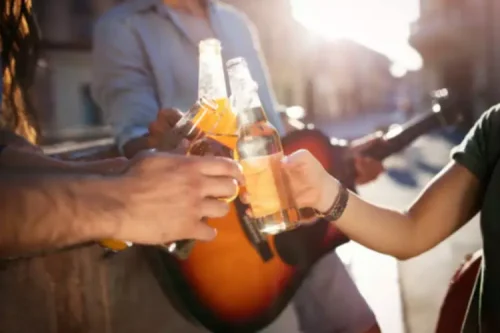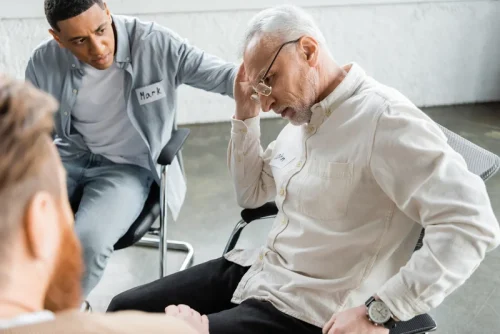Relapse Prevention Plan: Techniques to Help You Stay on Track

Obviously, you will want to understand these as much as you can to enable you to understand why the relapse occurred. Situations like going to a party with alcohol, going on vacation, spending extended time with family out of your routine, or meeting up with friends you used to use with are all what to do after a relapse common relapse triggers. If you can break free from the notion that relapse is a failure and begin to see it as part of the recovery process, you can build a strong foundation for sustained abstinence. About 40% to 60% of people who get treatment for substance use disorder have a relapse.
- Between 40 and 60 percent of individuals in recovery experience relapse.
- In many cases, 30 days of residential treatment and multiple months of therapy are required to prevent relapse.
- However, there are those in addiction recovery that never get over the impact of their first (and only) relapse, and the plethora of intense emotions that come with it.
Mindfulness Study: 11-minute training reduces drinking
The longer someone neglects self-care, the more that inner tension builds to the point of discomfort and discontent. Cognitive resistance weakens and a source of escape takes on appeal. This stage is characterized by a tug of war between past habits and the desire to change. Thinking about and romanticizing past drug use, hanging out with old friends, lying, and thoughts about relapse are danger signs. Individuals may be bargaining with themselves about when to use, imagining that they can do so in a controlled way.

Essential Self-Care Strategies for Sustaining Long-Term Recovery
- It’s likely that your relapse has impacted your loved ones, including your friends, family and spouse.
- In order to understand how to prevent relapse, it is essential to first understand the relapse process itself.
- A relapse or even a lapse might be interpreted as proof that a person doesn’t have what it takes to leave addiction behind.
It serves various functions, from managing withdrawal symptoms to maintaining long-term sobriety. Mindfulness techniques also play a significant role in managing post-relapse emotions. Mindfulness encourages individuals to stay present and aware of their feelings without judgment, which can reduce the intensity of negative emotions and prevent impulsive behaviors. Incorporating mindfulness into daily routines can foster a sense of calm and increase resilience against stress, a common trigger for relapse. Understanding the warning signs of an emotional relapse, such as bottling up emotions or neglecting self-care, is crucial for prevention. Individuals can take proactive steps to maintain their recovery by recognizing these early indicators.
- After a relapse, reestablishing a strong support network is crucial for recovery and long-term sobriety.
- If someone you love recently relapsed, encourage them to rethink their supports and treatments.
- Individuals are encouraged to engage in self-care practices, attend therapy sessions, and participate in support groups to combat these negative emotions.
- During a mental relapse, you might start experiencing cravings or think of previous use positively.
- For instance, book yourself a relaxing massage or buy yourself something you’ve had your eye on.
Understanding the Distinction Between a Slip and a Relapse in Recovery
Removing the stigma, shame, and ego from a relapse can help you understand your needs and move forward in recovery. A mental relapse is where we are conflicted between wanting to use and wanting to continue with our new way of life. We think about the old days, minimize the damage that the substances caused in our lives, and hang out with old friends. We may start telling ourselves that we can use substances again successfully.
Relapse Is Not a Failure
In the case of addiction, brains have been changed by behavior, and changing them back is not quick. Research shows that those who forgive themselves for backsliding into old behavior perform better in the future. Getting back on track quickly after a lapse is the real measure of success. Creating a rewarding life that is built around personally meaningful goals and activities, and not around substance use, is essential. Recovery is an opportunity for creating a life that is more fulfilling than what came before. Attention should focus on renewing old interests or developing new interests, changing negative thinking patterns, and developing new routines and friendship groups that were not linked to substance use.
- This is when you start thinking of using again, contacting the people who encouraged your addiction, or going back to your habits while using.
- Over time, addiction makes it harder to enjoy activities outside of substance use and get sober on your own.
- These tips will help you get control of your addiction again instead of the other way around.
Physical Relapse
Recovery from drug and alcohol addiction can be a long and challenging process. Support groups and 12-step programs like Alcoholics Anonymous (AA) and Narcotics Anonymous (NA) can also be very helpful in preventing relapses. Focus on how much better your life will be once you stop using drugs or alcohol for good. Think about what’s driving you to quit, such as rebuilding damaged relationships, keeping a job, or getting healthy again. Certain people, places, and situations can drive you back into drinking or using drugs again. People must also recognize that it’s okay to feel occasional cravings.

In the chemotherapy with radical cystectomy group, event-free survival was 59.8% and overall survival was 75.2%. Treatment-related adverse events were also the same in both groups (41%). Give yourself credit for each small gain you make — one week sober, one month off drugs, etc. For each goal you achieve, give yourself a reward as motivation to keep moving forward. For instance, book yourself a relaxing massage or buy yourself something you’ve had your eye on. Have someone on call for weak moments when you might slip back into your old habits.

A deep period of reflection will be a satisfying and liberating stage of your recovery. It is common for people who are in recovery following cocaine addiction and dependency to experience several triggers and cravings that can lead to a return to cocaine use. This often happens in stages and can be preceded by many warning signs. This guide provides information on preventing and managing cocaine relapse. Healthcare providers play a crucial role by offering therapy, relapse prevention plans, and resources like support groups.
Developing Healthier Habits
Using drugs or alcohol can seem like the easiest way to feel happy or normal. Loneliness and a lack of social support can also make alcohol or drug use more appealing. The best way to prevent relapse is to practice coping behaviors consistently, https://ecosoberhouse.com/ build a support system and avoid risk factors. Individuals who cut back on support group meetings, stop practicing coping behaviors and begin to think they can control their drinking or drug use increase their chances of relapse.
Emotional relapse
Counterproductive, and, if they are allowed to fester because you have not made the necessary changes, they will not allow you to get successfully back on track, think of it this way. Relapse is part of the learning process of determining what will work for your particular situation. Addiction recoveries do not all follow the same clinical pattern, as a person’s circumstances, history, genetics, and so on, are always different.
